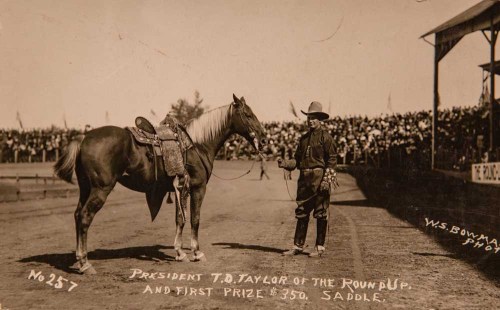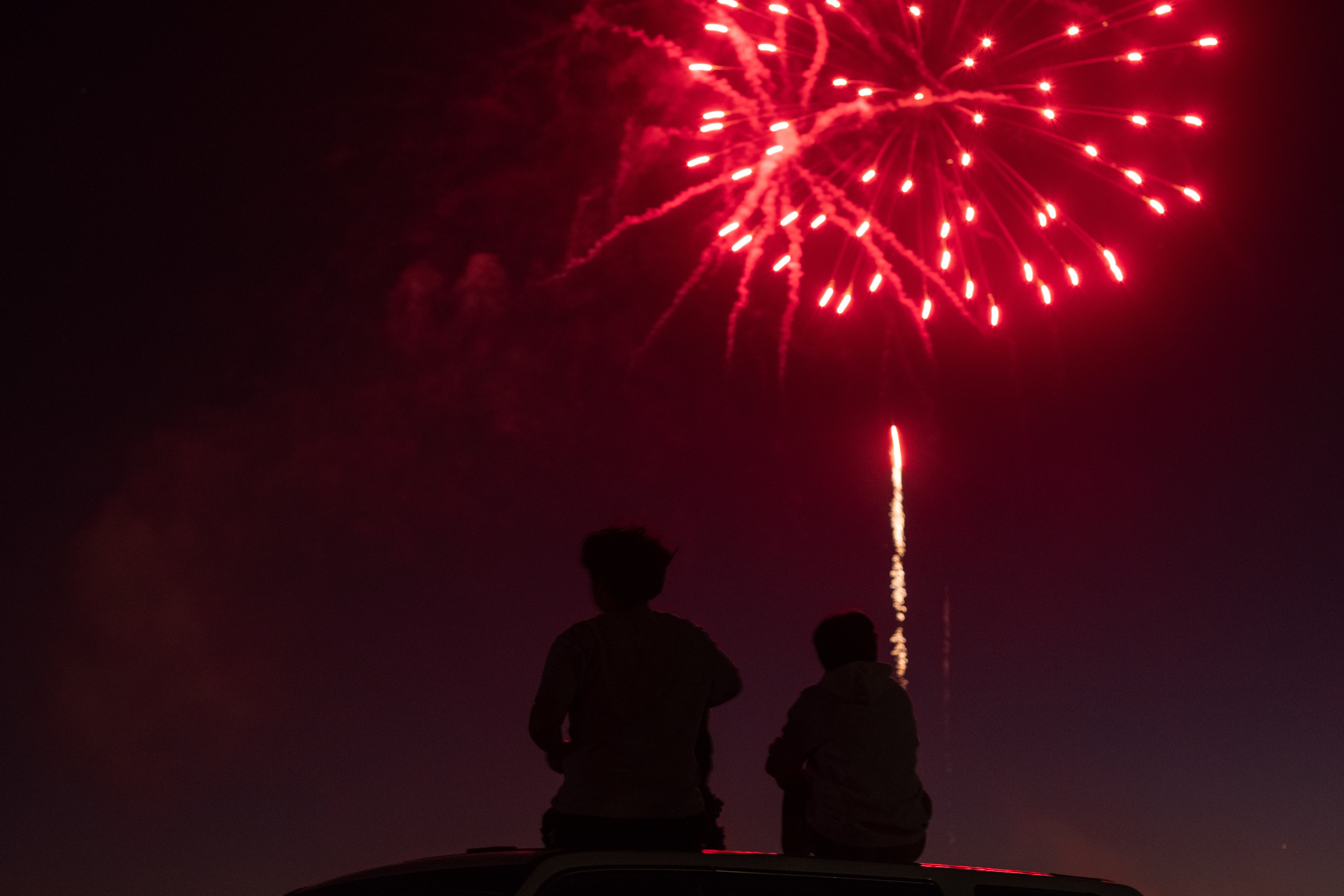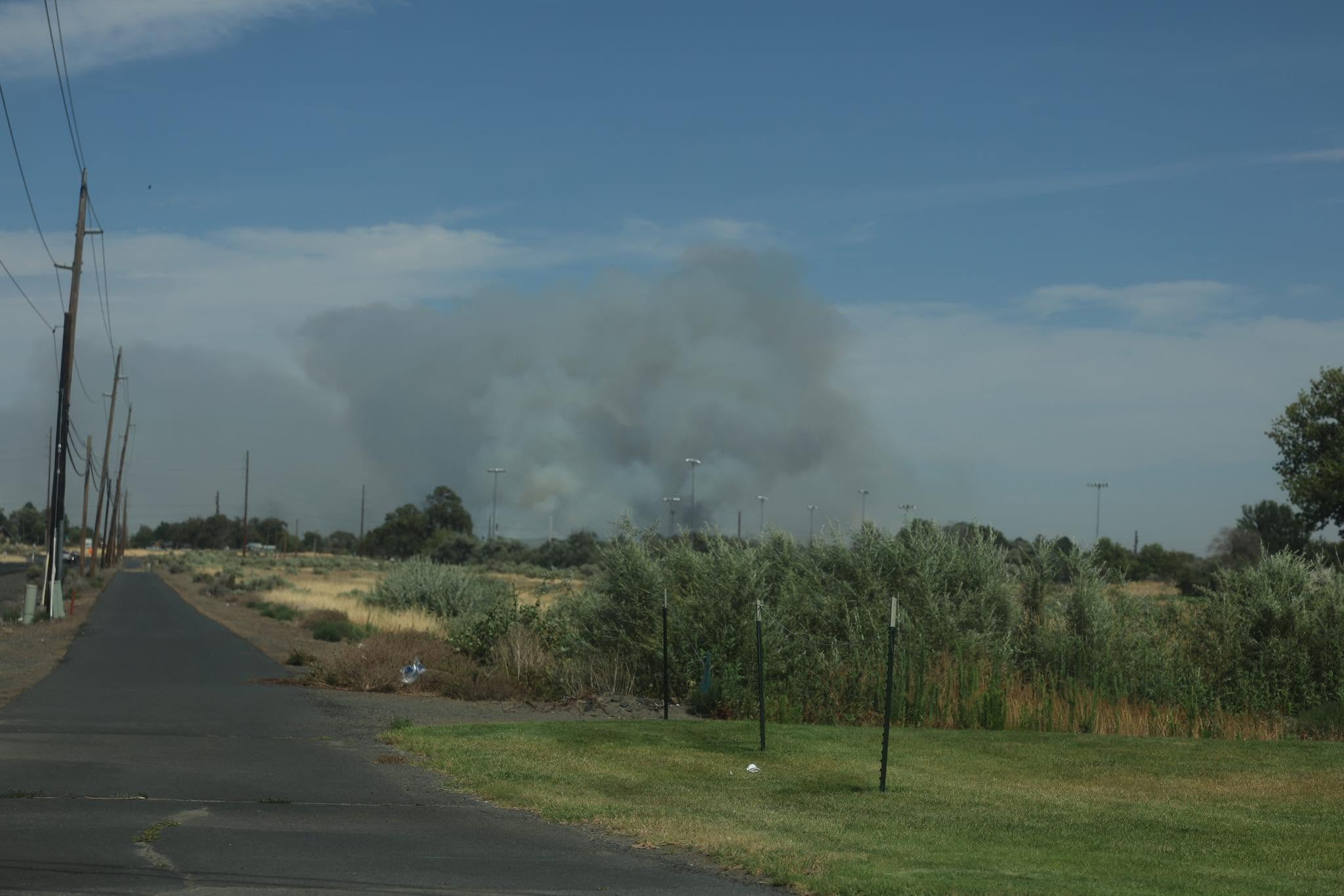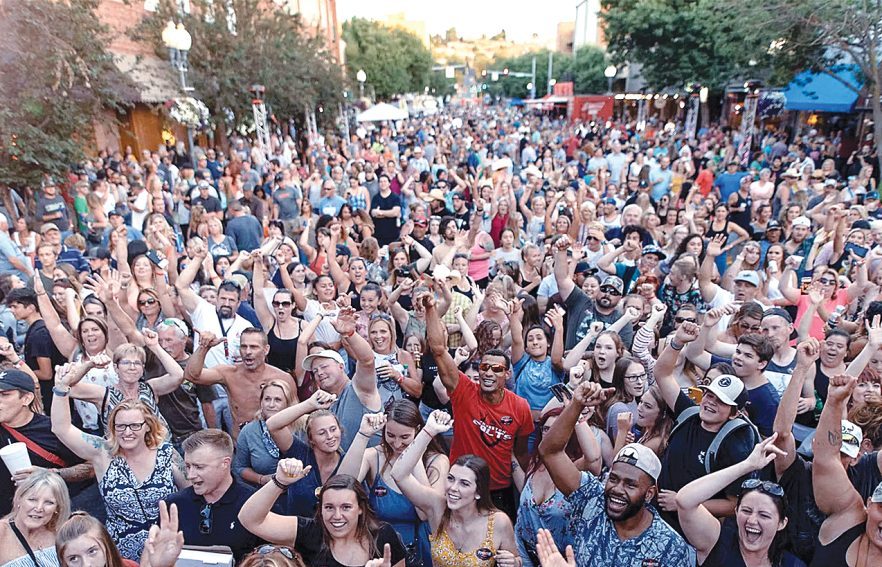2024 Round-Up: History highlights: 114 years of Round-Up and Happy Canyon
Published 8:00 am Monday, August 12, 2024

- Sheriff Tillman D. “Til” Taylor, president of the Pendleton Round-Up, poses for a picture with the first prize saddle in the early years of the Pendleton Round-Up.
In 1909, a 17-year-old named Lee Caldwell won a bronc riding contest in Pendleton. From that seed, the Pendleton Round-Up was born. The Round-Up started with the idea that real working cowboys could gather together and pit themselves against each other and the roughest stock around in a celebration of the real West. Here are some highlights:
1910-1919
Seven thousand spectators attend the inaugural Round-Up (1910); The first night show, written by Roy Raley, is performed (1913); Jackson Sundown, 53, a Nez Perce Indian, wins the all-around title (1916); Roy Raley and Anna Minthorn Wannassay collaborate to add the story of local tribes’ life before the arrival of white settlers to the Happy Canyon pageant (1916).
1920-1929
Round-Up president and Umatilla County Sheriff Til Taylor is murdered by a prison escapee (1920); A standing-room-only crowd of 35,000 attends the final night of Round-Up (1922); Stories about the Round-Up appear in New York, Syracuse and Philadelphia as well as Washington and California (1924); Cowgirl Bonnie McCarroll dies from injuries suffered in a bronc riding accident, and Round-Up directors ban women from bucking events (1929).
1930-1939
The District of Columbia bicentennial suggests the Round-Up be moved to the nation’s capital for the event. The board says, “No, it belongs to Pendleton and was not a wild west show, nor was it for sale” (1931); The Westward Ho! parade thrills thousands of spectators, covering 37 blocks and featuring more than 3,000 participants, including 2,000 Indians (1935).
1940-1949
Fire destroys the grandstand during a softball game in August, but a new one is built in time for the Round-Up (1940); World War II forces the cancellation of the Round-Up and Happy Canyon Night Show (1942-43); The Pendleton Round-Up welcomes home veterans of World War II; jitterbug contests are staged following Monday’s Happy Canyon Night Show (1945).
1950-1959
Turf is added to the Round-Up Grounds for athletic contests (1951); A roof is put on the grandstands (1954); The new Happy Canyon grandstands host 5,000 spectators (1955); The Round-Up receives its first taste of national exposure when CBS televises the Sept. 14 show live for one hour (1957); The Let ‘er Buck Room is built under the south grandstand (1958).
1960-1969
Wild cow milking is added as an event (1962); Ear-biting in the wild horse race is outlawed, as well as nine other rules enacted by the Rodeo Cowboys Association at the request of animal welfare groups (1967); The Severe Brothers of Pendleton take over making the trophy saddle from Hamley and Co., which leaves the saddlemaking business (1968); The Round-Up Hall of Fame is established (1969).
1970-1979
Gambling at Happy Canyon is declared illegal (1970), but the Oregon Legislature passes the Happy Canyon Gambling Act, allowing nonprofit gambling (1971); The Hall of Fame Room is constructed under the south grandstand (1973); Cowboys are able to enter the rodeo with just a phone call. Contestants and stock also are matched up using the system operated by Rodeo Communications of America (RoComm) (1976).
1980-1989
The Round-Up and Happy Canyon sponsor a re-enactment wagon train moving from Ukiah to Pendleton (1980); The inaugural Exceptional Rodeo (now the Children’s Rodeo), pairing cowboys with mentally and physically handicapped youth, is held (1983); Author Ken Kesey writes a screenplay — which has never been made into a movie — based on the 1911 Round-Up bucking contest between George Fletcher, Jackson Sundown and John Spain (1984).
1990-1999
Women compete in roughstock events for the first time since 1929 (1990); Professional Bull Riding held for the first time in the Happy Canyon Arena (1999).
2000-2009
Barrel racing returns to the Round-Up (2000); The Happy Canyon Night Show is revamped to be more historically accurate, and includes expanded narration and the addition of speaking parts (2001); The Hall of Fame moves from under the south grandstand to the corner of Southeast 12th and Court Avenue (2006).
2010-2019
Centennial Plaza and the new west grandstands are built for the Centennial Round-Up; events such as hide races, wild horse races and the serpentine entry return to the rodeo in celebration of the 100th anniversary of the first Round-Up (2010); Happy Canyon is named Oregon’s Official State Outdoor Pageant and Wild West Show (2011); four clones of former world champion bucking bull Panhandle Slim compete in the Round-Up, a first for cloned rough stock (2013); The Strip’n Chute bar is added to the north grandstands, serving whiskey and other liquor, and Happy Canyon completes the $1.5 million mezzanine project (2015); the Happy Canyon Night Show celebrates its centennial (2016); the Section DD Bar, serving beer, whiskey drinks and cigars, is added to the east grandstands (2017); The Round-Up and Happy Canyon Hall of Fame celebrates its centennial (2019).
2020-2024
The Pendleton Round-Up Association in 2020 made the challenging decision to put the show on hold while the coronavirus pandemic raged and government mandates banned big events. This was only the second time the Round-Up was cancelled. In place of the rodeo and all that goes with it, the Round-Up implemented Let ‘Er Buck Cares, an initiative that raised money to donate to dozens of local businesses and organizations that rely on Round-Up week to fill coffers; The Round-Up roars back, as strong as ever and Goldie’s Bar received a makeover (2021); First year back with no masks or social distancing (2022); Navy Leap Frogs parachute into the Wednesday rodeo and Thursday Children’s rodeo and a new medical facility opens to better serve contestants and fans (2023); The Golden Circle of Champions fundraiser is added to raise awareness and money for pediatric cancer and new permanent margarita bar structure in front of the Roy Raley Room (2024).









